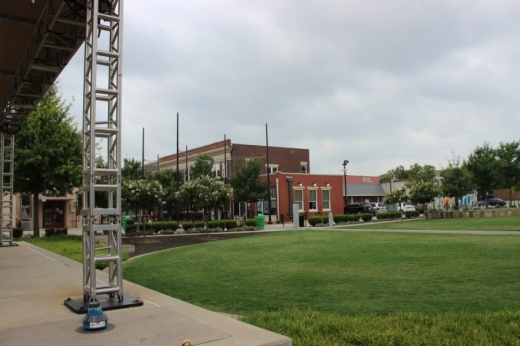The subject came up again in early August at the mayor’s “Listen, Learn, Lead” forum, a chance for the city to gather a variety of perspectives from the African-American community.
When the topic turned to grocery store access, every speaker had a different version of the same question: Why do residents east of I-35E have to drive outside their communities to buy fresh produce?
“I feel that that’s a disservice to our citizens and to the community,” Traci Petteway, a life coach who works in Lewisville, told city officials at the Aug. 6 forum.
Old Town Lewisville used to have a grocery store of its own, a Piggly Wiggly location that served the neighborhoods around one of the city’s core areas. Years ago, that Piggly Wiggly closed down, as did a nearby Kroger, leaving a hole that has still not been filled.
Pleas from residents for a new grocery store east of I-35E are not new to officials like Jason Moore, the city’s economic development director. But officials say the effort to attract one to Old Town has faced substantial challenges.
For one, existing grocery stores on the other side of the highway have their grip on the market and may be deterring new developers from coming in, Moore said. Old Town and the surrounding neighborhoods are also less dense than areas to the west, which limits the number of potential customers. And incomes in these more established neighborhoods—a key indicator for grocery stores looking to move in—trail the incomes of neighborhoods to the west and east, according to U.S. Census Bureau data.
Despite these limitations, as of early September, the city was in active talks with a local developer to bring a small boutique grocery to Old Town Lewisville, Moore said.
Moore said he could not yet share the name of the developer or further details on the business. City officials are hoping to wrap up the deal and announce it publicly by October, he said.
Moore cautioned that until the deal is finalized, it could fall apart at any time. A grocery store in the Old Town area remains a tricky proposition for developers, Moore said, adding that it would likely require some form of economic incentive from the city. More than convenience
For some of the area’s residents, the lack of a grocery store within their own communities is about more than the convenience of a shorter drive.
Old Town resident Kristin Green, a Lewisville City Council member, said she moved her family to the neighborhood four years ago because of its distinctive character.
“From a resident’s perspective, part of Old Town’s charm is you’ve got this walkable community,” Green said. “I can walk to several different parks. I can walk to city hall. I can walk to my church. ... It’s a really great neighborhood in that way. But we don’t have a grocery store.”
She also sees residents from time to time walking back toward the neighborhoods on Main Street with bags draped over their arms.
The U.S. Census Bureau estimates about two dozen workers in the neighborhoods around Old Town lack access to a vehicle, according to five-year estimates from the 2018 American Community Survey. For those residents, a grocery store trip can be a multi-mile round-trip walk.
Alvin Turner, a member of the mayor’s community group and the city’s planning and zoning commission, said the difficulties extend to the area’s older population as well.
“A couple of months ago they opened up a grocery store down in Music City [Mall Lewisville],” Turner said at the mayor’s forum. “That’s out of range for an 81-year-old woman to drive. She’s got to come up Main Street to go to Walmart, [or] to go to WinCo.”
Even if the city’s current talks with the grocery store developer fall through, there is a chance that future efforts could be more successful after some of Lewisville’s development projects come online, Moore said.
There are several mixed-use projects in the works that would add to Old Town’s residential base, Moore said. The area’s population density of 2,200 residents per square mile currently ranks on the lower end of census tracts in the greater Lewisville area, according to the same government survey.
Developers often assume a symbiotic relationship between rooftops and stores, where more of one is likely to attract more of the other, Moore said.
Because of these factors, the city expects it will be difficult to attract a large grocer, like a Kroger, to come in and compete with the Walmart and other stores across the highway. Instead, they have focused their attention on a boutique grocery that could be embedded further into the community.
Still, until this basic need is met, some residents are going to feel left out of the city’s development, said Petteway, the Lewisville life coach.
“I do also see the needs of a community and the people in that community,” Petteway said. “And if you build out everything on this side, then you’re omitting [the east side].”





